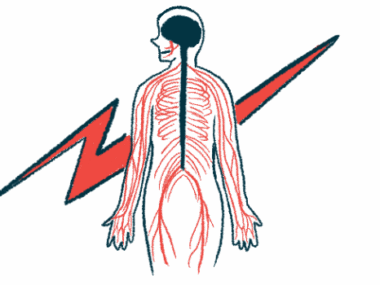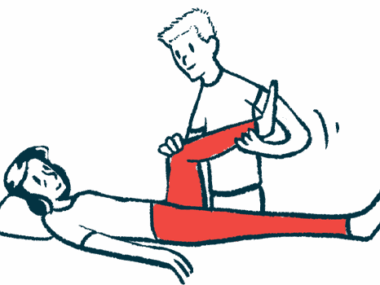Pain management with CMT is a lifelong journey of self-discovery
As my symptoms progress and change, I must adapt my practices
Written by |

I don’t know if it’s possible to live with Charcot-Marie-Tooth disease (CMT) without developing a long-term relationship with physical pain. Recognizing this, the Hereditary Neuropathy Foundation (HNF) provides a guide to common pain remedies called the “ABCs of CMT Pain Management.”
I’ve been referencing this guide for several weeks and comparing some of its suggestions with my lived experiences. While I don’t think it provides the sort of in-depth review that one would expect from a scholarly article, the guide is handy as a quick, general overview.
In it, I’ve found enlightening information about a few pain relief options I’ve been trying to incorporate into my everyday life. However, I always consult my physician who knows my medical situation and history before pursuing any independent treatments. After all, CMT is a complex condition, and the pain that can manifest may have many different root causes.
Following are some of the pain management techniques that have worked for me.
Ankle-foot orthoses
When it comes to CMT pain, I’ve experienced muscle cramps and spasms in my legs that have awakened me in the middle of the night. Sometimes sharp pains seem to run up my legs, and I’ve had throbbing pain in my feet that lasts for hours after walking long distances.
When it comes to the intense pain that lingers after walking, ankle-foot orthoses (AFOs) were a great help in providing some relief. I suspect it’s because the devices corrected the awkward gait that strained my feet and legs. However, I’ve also found the extra support and compression generally comforting.
That said, I’ve also lost quite a bit of excess weight over the past few years, so my AFOs no longer fit me right. On the other hand, weight loss has reduced the strain an awkward gait has on my body. Still, I’m thankful to have the orthotics in my life.
Heat therapy
My first introduction to heat therapy was when my brother and sister gifted me a sauna blanket — a sort of heated bag I can slide my entire body into to mimic the effects of a sauna. While some proponents suggest that saunas can detox the body, I don’t know if this claim has been verified. Still, I find the practice relaxing, and I sleep better after I use my sauna blanket.
Heat therapy has certainly helped me manage the soreness and achiness that CMT causes me. According to the HNF’s publication, heat therapy may work for some because heat can relax muscles and increase blood flow.
General wellness practices
The HNF’s pain management guide lists various possible remedies for different types of CMT pain. Personally, I’ve found that some of the most effective tools in relieving pain, as well as stress and anxiety, are simple and relatively low cost. Meditation, exercise, and getting enough sleep fall under this category and are perhaps underrated when it comes to pain relief.
However, integrating these practices into one’s life requires thoughtful consideration. Not everyone has the time, freedom, or resources to meditate, exercise, and get at least seven hours of sleep regularly. I’m lucky I have access to a nearby gym, and that my job and my family dynamic allow me a lot of independence in managing my meditation time and sleep hours.
Ultimately, each CMTer needs to discover for themselves the best method of pain management. We all have different bodies, different constraints, and different ways our symptoms manifest. For most of us, chronic pain management is a continuous journey of self-discovery. We must adapt as our symptoms change and we enter new stages of life.
Note: Charcot-Marie-Tooth News is strictly a news and information website about the disease. It does not provide medical advice, diagnosis, or treatment. This content is not intended to be a substitute for professional medical advice, diagnosis, or treatment. Always seek the advice of your physician or other qualified health provider with any questions you may have regarding a medical condition. Never disregard professional medical advice or delay in seeking it because of something you have read on this website. The opinions expressed in this column are not those of Charcot-Marie-Tooth News or its parent company, Bionews, and are intended to spark discussion about issues pertaining to Charcot-Marie-Tooth.







Jean Hadley
thank you for your article. I have two sisters and myself with CMT. The onset of CMT came at different ages. 70, 84, 71. I have done a great deal of family research here in the USA and in England (where my maternal grandmother) came from and carried CMT to her seven children, who have passed it on to several offspring. Anyone with CMT should read everything in your article. You are so on target!! I have been dealing with CMT for 20 years (I am now 90.) Yes, one thing, with CMT, the brain remains unbelievable and so far I have never heard of a family member, here or abroad, with Alzheimer's. I am fortunate to live near Yale Medicine. This month I will be examined by one of their doctors who is researching CMT. Thank you, JEAN HADLEY
Phil Sponsler
Losing weight and exercising daily along with full range stretching really has helped me. I also use ReBuilder Medical (FDA Approved) for neuropathy in warm water has work to calm my nerves and allow sleep. I also do infrared foot therapy right after the ReBuilder. Please do your research on these God sent therapies.
Harvardf Forden
I am a man, 82, So at this point my history is convoluted.
Had my back fused for congenital irregularities in 1986, At which time they told me I had CMT. Believe I had pain all my life as a child they always slept with my left leg hanging off the bed toward the floor. Didn't remember this until my whole function improved absolutely dramatically,, when I went on desipramine , a tricyclic anti-
depressant. Back fused after MRI. taken. Didn't help, but had sleep test about '95 or 96, and they told my doc I needed morphine sulfate.
That helps quite a bit and they started trying anti-depressants. Yeah some point they put me on desipramine and in two days told my wife I thought I felt differently. 3rd day I told her I knew I felt different and for four or five weeks operated like a different person. Back pain gone, Mentally almost too sharp and intuitive, And we moved about 20 miles away. After five or six weeks regressed back to original pain level on morphine, and very poor short term memory, which commenced in kindergarten.
Crystal Bach
Young!
I am so thankful for your website. How do I stay connected to get late updates on your new post?
I live in Edmonds, Washington. I have been doing hot yoga for about 10 years and it has saved my life. A lot of movement helps me but it when it comes with heat I feel like I can actually move my body so I liked what you said about the heat sauna blanket that you got. I am constantly having heat pads all over me. Hot yoga definitely works so good for me and I use bamboo stick to balanced in class.
One day, I’ll open up my own hot yoga studio for people with movement impairments and so they can come in and move their body and warm rooms, I truly think it’s the wave of the future for People dealing with their own CMT and other Hereditary neurological diseases.